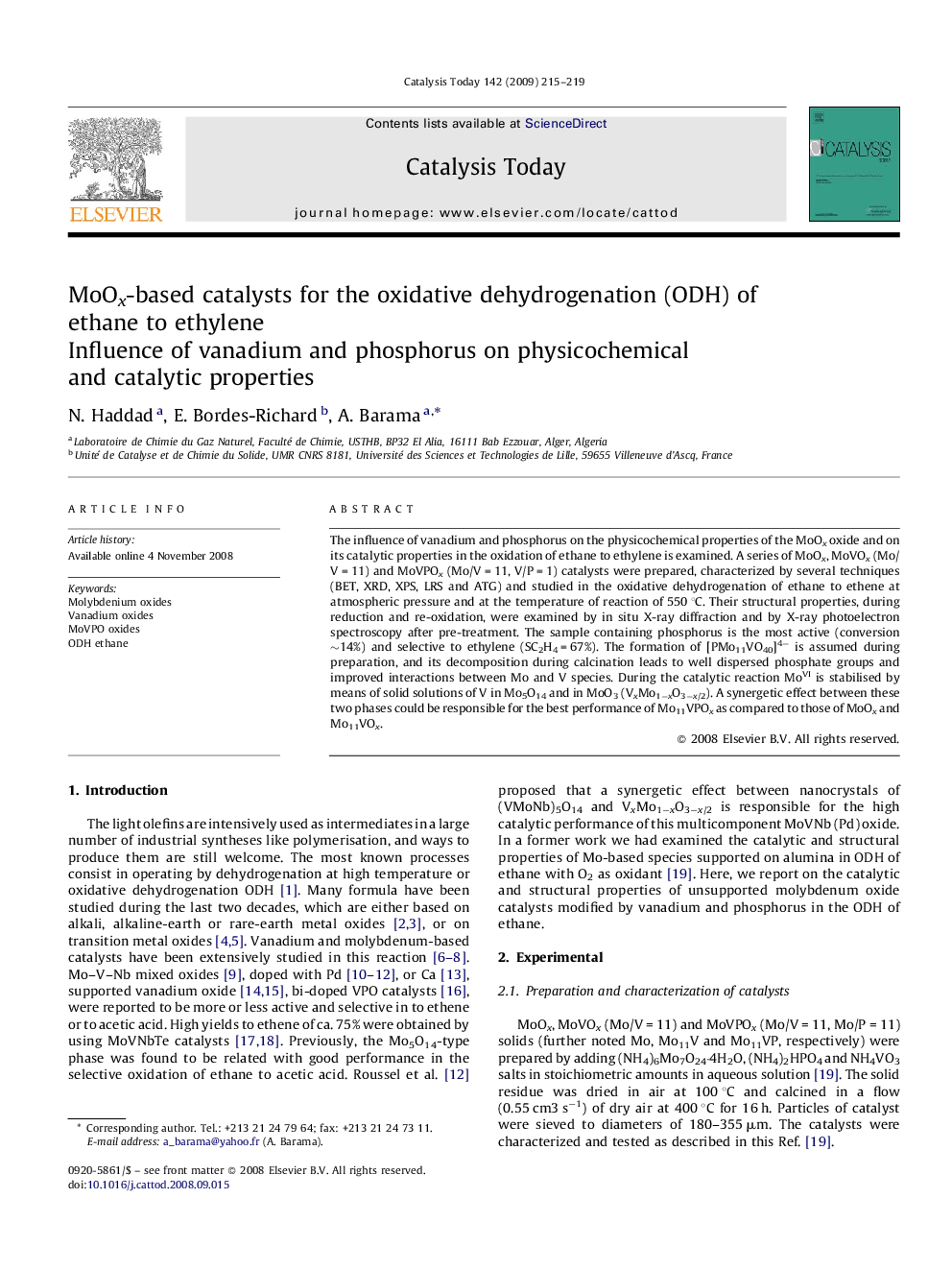| Article ID | Journal | Published Year | Pages | File Type |
|---|---|---|---|---|
| 57442 | Catalysis Today | 2009 | 5 Pages |
The influence of vanadium and phosphorus on the physicochemical properties of the MoOx oxide and on its catalytic properties in the oxidation of ethane to ethylene is examined. A series of MoOx, MoVOx (Mo/V = 11) and MoVPOx (Mo/V = 11, V/P = 1) catalysts were prepared, characterized by several techniques (BET, XRD, XPS, LRS and ATG) and studied in the oxidative dehydrogenation of ethane to ethene at atmospheric pressure and at the temperature of reaction of 550 °C. Their structural properties, during reduction and re-oxidation, were examined by in situ X-ray diffraction and by X-ray photoelectron spectroscopy after pre-treatment. The sample containing phosphorus is the most active (conversion ∼14%) and selective to ethylene (SC2H4 = 67%). The formation of [PMo11VO40]4− is assumed during preparation, and its decomposition during calcination leads to well dispersed phosphate groups and improved interactions between Mo and V species. During the catalytic reaction MoVI is stabilised by means of solid solutions of V in Mo5O14 and in MoO3 (VxMo1−xO3−x/2). A synergetic effect between these two phases could be responsible for the best performance of Mo11VPOx as compared to those of MoOx and Mo11VOx.
